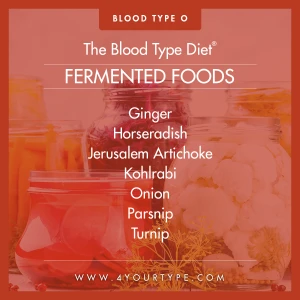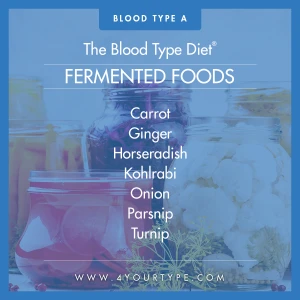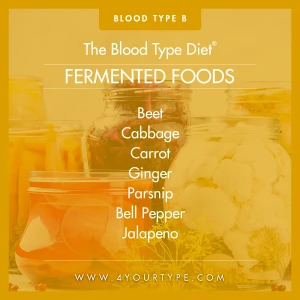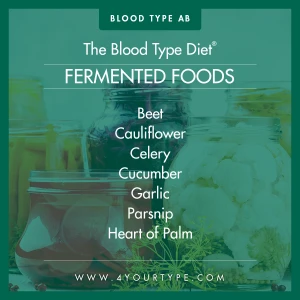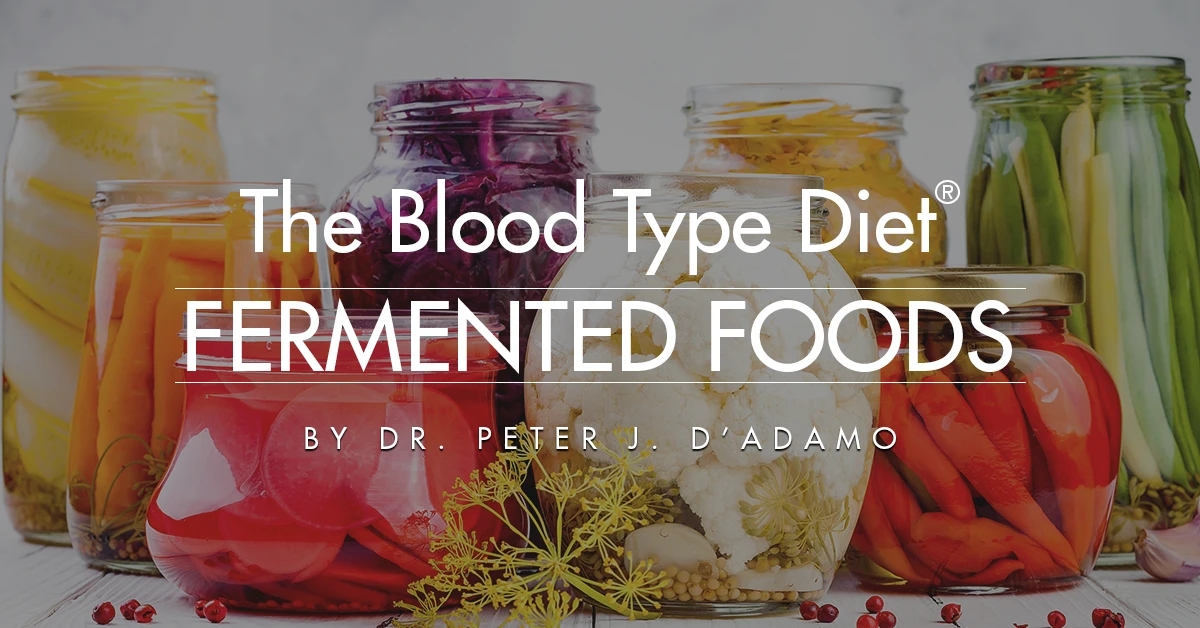
The Blood Type Diet is a great way to reduce inflammation and maximize health. Much of this has to do with lectins, the carbohydrate-binding molecules found in so many different foods. These lectins may react badly with one blood type but have no effect on another. The Blood Type Diet removes foods that are difficult to digest or that contain harmful lectins for your type to alleviate the stress on your body.
What Are Fermented Foods?
Patients and followers of the diet always have questions about certain types of foods. As the years go by, different fads hit the mainstream, causing many people to wonder if those foods would be helpful for them on the Blood Type Diet. One category of foods I have been asked about a lot recently are fermented foods. The fermenting process has been around since as early as recorded history and is defined as “the chemical breakdown of a substance by bacteria, yeasts, or other microorganisms, typically involving effervescence and the giving off of heat.” The process is most notably used to make alcohol and preserve vegetables though it is also used to make yogurt, cheese and salami, among many other things. It’s actually quite a simple process to do in your own home that only involves a few steps. The steps for fermenting vegetables are listed below.
- Cut and clean your vegetable of choice, then mix it in a glass jar with 1 tsp of salt per cup of vegetable. Fill the jar with water, enough to fully cover the ingredients in the jar. Make sure the vegetables stay submerged and don’t float up above the water line. If they keep rising, put a small weight in the glass jar to hold them underwater.
- Use ¼ cup of liquid from a previous ferment per quart of vegetable (if available), or the contents of a probiotic capsule (such as Polyflora), as a starter by adding it to the jar. The starter is not necessary, but facilitates faster fermentation. If you omit the starter, allow an extra day for wild cultures to ferment on their own. The salt will keep any unhealthy bacteria or fungi from growing, while permitting the lactic acid bacteria to thrive.
- Seal the jar firmly and allow the vegetables to culture at room temperature for 3-5 days, tasting the mix daily to achieve the proper taste and consistency. When the vegetable ferment is done, refrigerate it.
Stick to Your Food Values
In general, fermented foods can be a good thing for your body, as they contain pro and prebiotics, key components in maintaining proper gut health which can naturally deteriorate over time from stress and other factors. While probiotics and prebiotics are definitely great healthy additions to your diet, they still need to come from Blood Type Diet compliant sources. It’s important to always adhere to the right options for your blood type, regardless of what trends say about probiotics, Omega-3’s, or any other flavor of the month trending nutrition topic. Also, be wary of added sweeteners or other ingredients (such as vinegar) in bottled or pre-packaged varieties of fermented foods, a good practice for not just this category of food, but any product you buy that uses multiple ingredients. You would be surprised how many avoids can be lurking on labels of pre-packaged goods.
Fermented Options Right 4 Your Type
While some pre-made fermented foods can be question marks because of their ingredient lists, there are some fermented foods which are easy to define by Blood Type Diet values. Cultured soy foods, such as tempeh, miso, and natto are beneficial options for Blood Types A and AB, as these types thrive on soy. Yogurt and kefir are beneficials for Bs and ABs and are avoids for Os. Red wine, one of the most popular fermented foods, is neutral for all types, while white wine is only an avoid for Type O. If you are looking for some fermented options that would work for you, we have some great blood type specific fermented vegetable choices below that are simple to make at home with the aforementioned 3-step process.
Remember, virtually any bean, grain, root vegetable, fruit, spice, or beverage can be fermented. Just make sure you're starting with an ingredient that's neutral or beneficial for your blood type. If you are adding any ingredients throughout the process, take those values into account as well. To boost the probiotic benefits from fermentation, use a capsule of my blood type specific Polyflora probiotic supplement as the starter for the process, which will also speed up the fermentation and get you those delicious fermented foods even sooner!
A special thanks to Louisa Wah, the chef behind the recommendations above. If you are looking to learn more about cooking right for your Blood Type she is offering an online cooking course that will accommodate all skill levels and people who are new to the Blood Type Diet as well.


